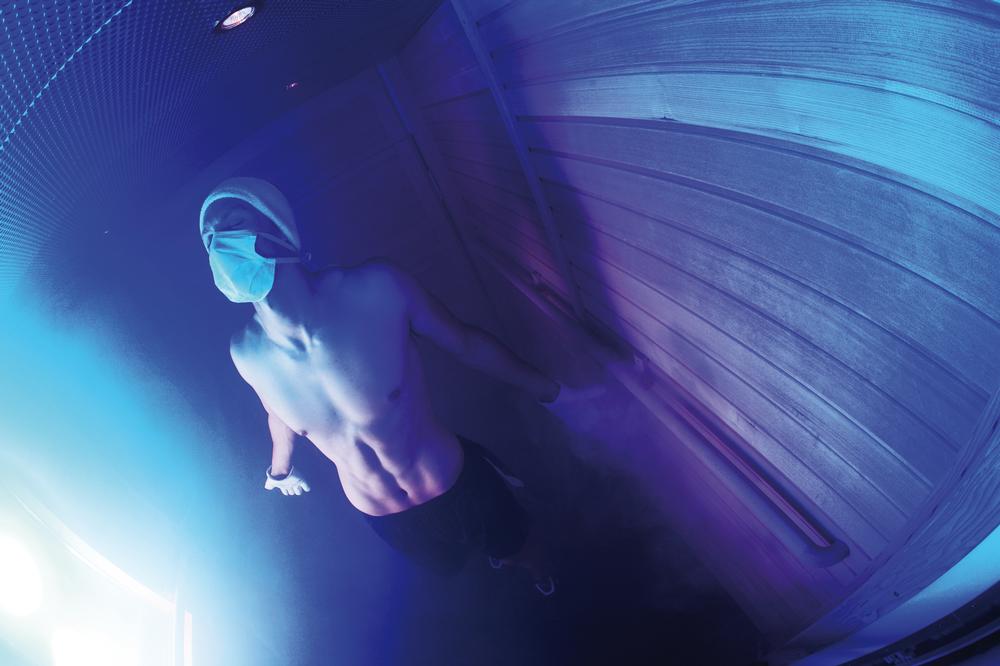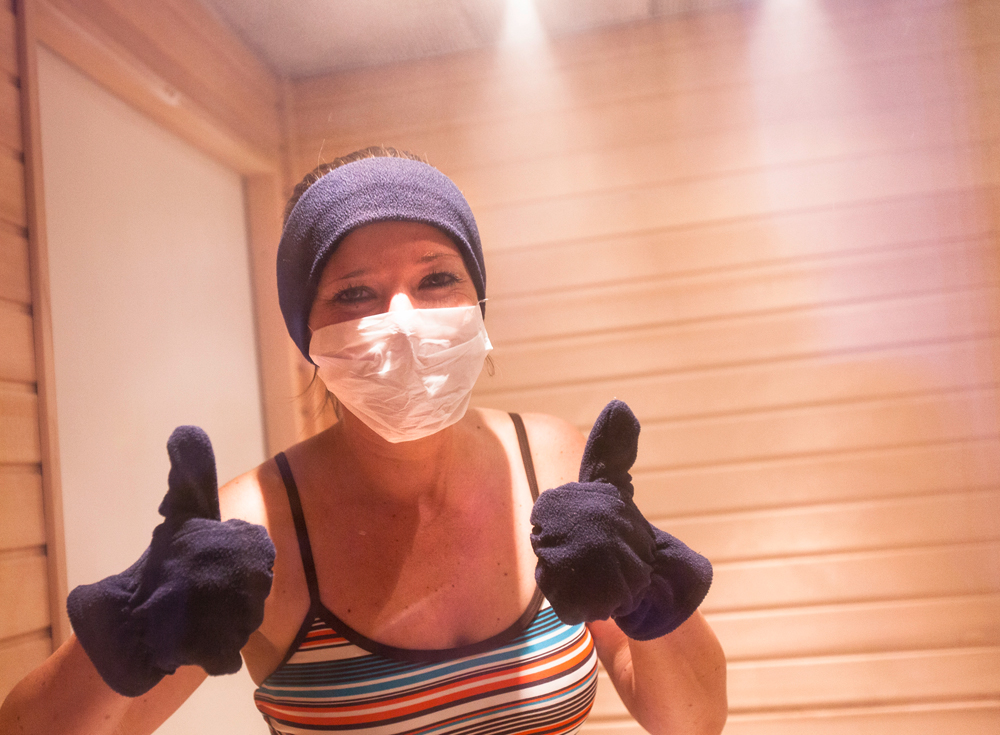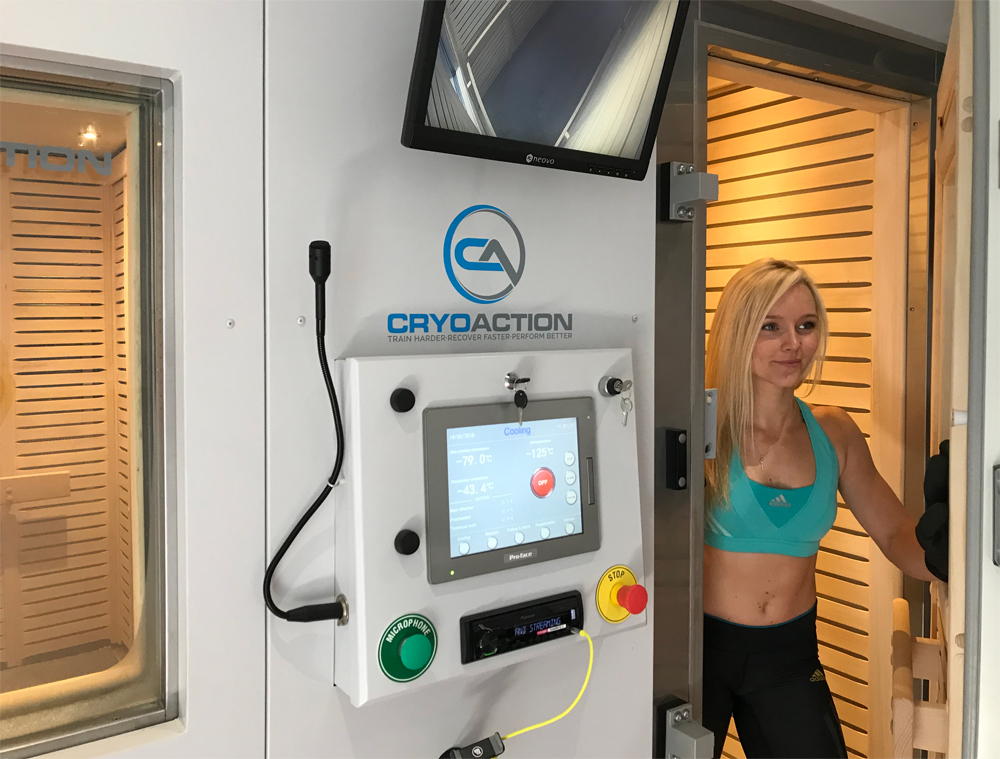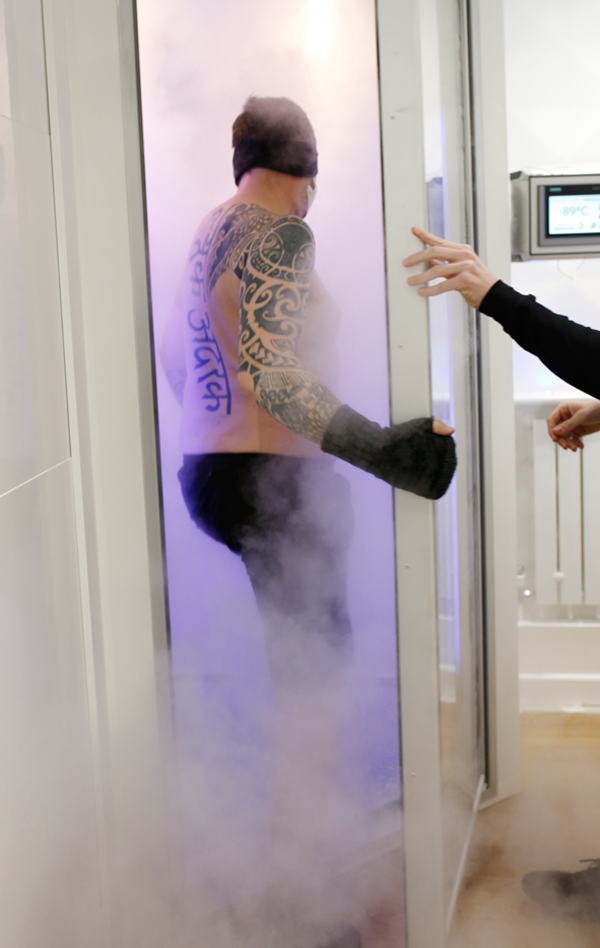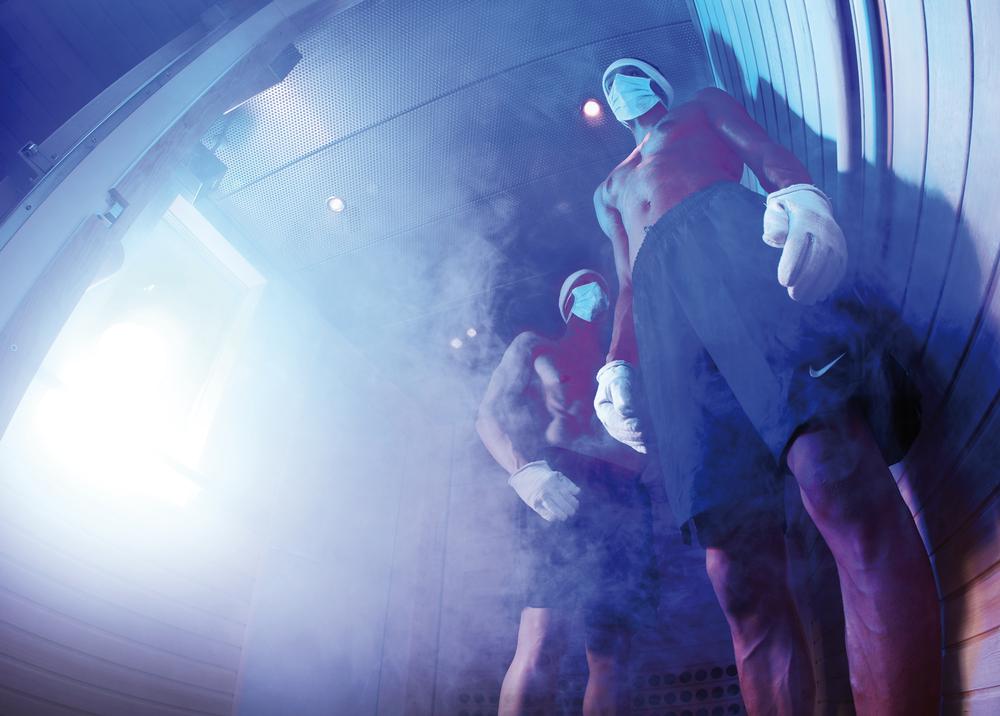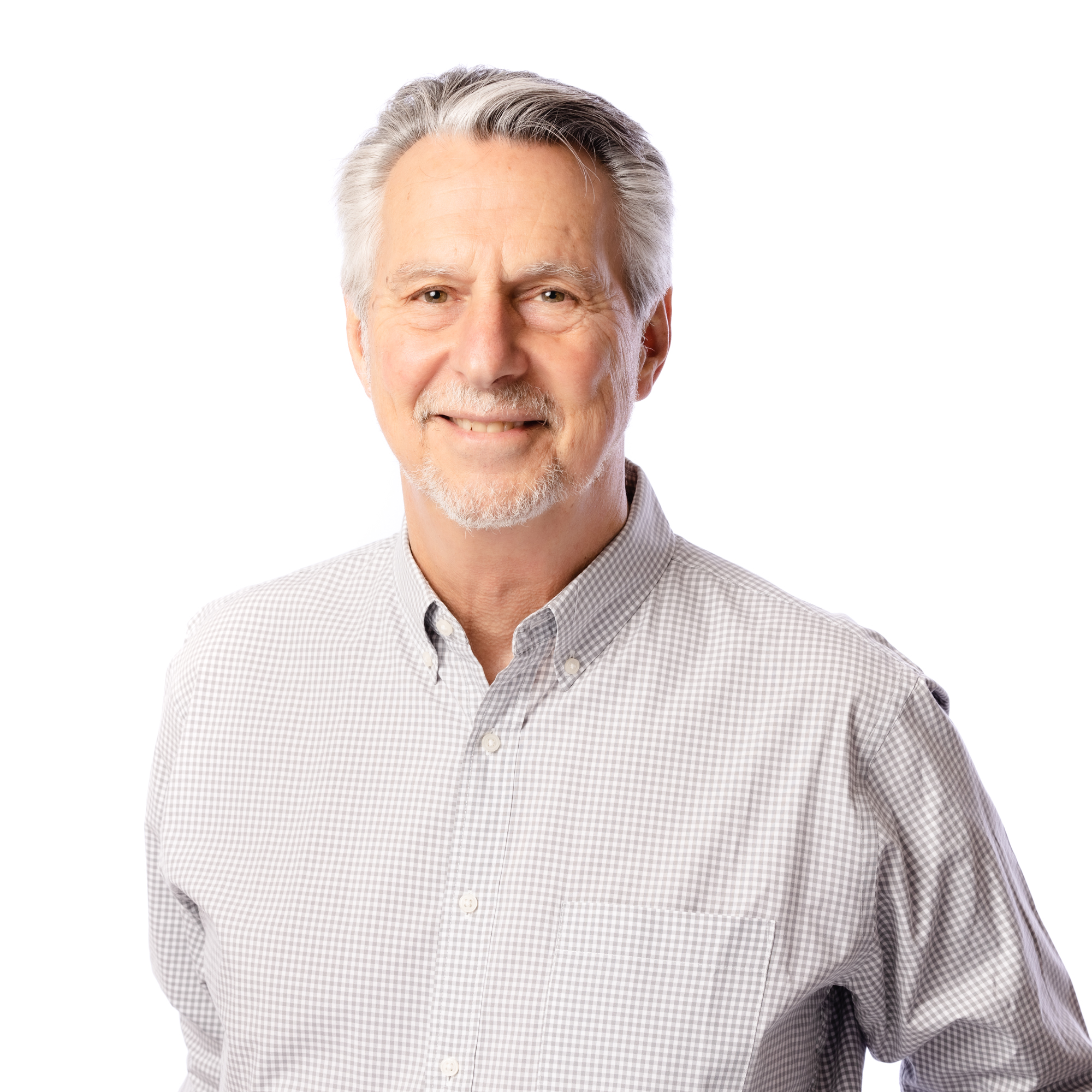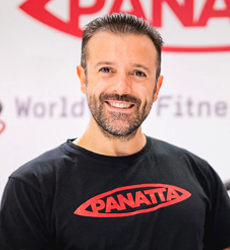Standing for three minutes in a space cooled to minus 130°c may sound a tough sell to your members, but it’s a trend that originated in physical therapy, was adopted by elite athletes and is now becoming mainstream in spas and health clubs.
The benefits claimed of cryotherapy are many and varied, meaning it has a broad appeal: recovery after training, improved mood, fewer aches and pains for ageing joints and even a better appearance, with people emerging after treatments feeling more alert, upbeat and energised.
Cryotherapy works by forcing the body to send blood to the brain and the core in a process called vasoconstriction. Afterwards, vasodilation takes place, whereby blood that is now enriched with oxygen, nutrients and enzymes flows back into the peripheral tissues.
This process gets body fluids moving and in doing so increases power, performance and endurance, as well as clearing out lactate. It can boost recovery and reduce aches and pains – both from exercise and from chronic illnesses such as arthritis. Endorphins are also released and it’s even claimed to reduce wrinkles.
“Pulling blood away from the peripheries reduces inflammation and the effects of oxidative stress on the body,” says Laurence White, MD of RP-X, which distributes Cryoair chambers in the UK.
“It also helps with the complexion and anti-ageing, as the cold temperatures stimulate the production of collagen, reducing fine lines and wrinkles and decreasing pore size. The skin becomes toned, tighter and circulation is improved,” he says.
Rainer Bolsinger, sales manager of Zimmer MedizinSysteme likens cryotherapy to icing an injured knee, but the whole body and mind also benefit: “It affects the nervous system, forcing our brain into a heightened state, which can give stress relief and clear the mind.”
Roots in medicine
The benefits might sound wonderful, but are they sufficient to warrant three minutes of bone-chilling cold? According to Bolsinger, at this temperature, the air no longer contains moisture, so people don’t perceive the cold to be extreme. To protect their extremities, which are starved of blood during the treatment, users enter the chamber wearing protective masks, gloves, nipple protection and footwear. Music is often used to take their mind off the fact that they’re being chilled.
Cold therapy has a long history in medical treatments, first mentioned 400 years BC by Hippocrates as a method of treating pain. In the 19th century, Sebastian Kneipp popularised the Kneipp Method, which uses cold on the extremities – a method still used today in many spas and thermal baths.
“Whole-body cryostimulation at ultra-low temperatures was first applied by Professor T Yamauchi in Japan to treat rheumatoid arthritis. During the early 1980s several professors in Germany followed his approach and developed the treatment further,” says Bolsinger. “It’s been used in clinics and rehab centres as a method of treating pain, shortening rehabilitation and helping with stress and sleep. Now we’re seeing it move into the world of health clubs and spas, where it’s used for preventative health, wellbeing, beauty and to optimise training and recovery.”
UK-based company, CryoAction, says cryotherapy’s use in wellness is increasing and interest is growing across the board, from Premier League football clubs, to spas and health clubs. “Cryotherapy is becoming increasingly popular across the health club sector and we’re installing new units all the time, driven by consumer demand, as clubs are seeking to respond to members who want to look and feel amazing,” says CryoAction CEO, Ian Saunders. “The chambers complement existing treatments and facilities and offer a new revenue opportunity to health clubs.”
Originally developed for use in physical medicine, the natural pain-relieving properties of the cold are beneficial for sufferers of conditions such as arthritis, rheumatism and fibromyalgia,” says Saunders. “The treatment also has significant capabilities that increase the commercial opportunity for health clubs.”








